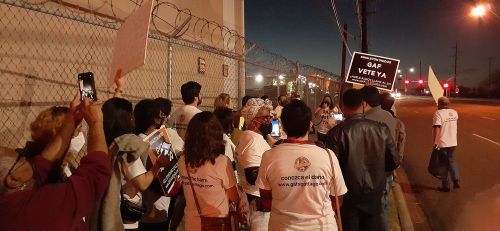#zoning
ENVIRONMENTAL INJUSTICE: In Dallas, the Toxic Legacy of Zoning Lingers
Loose regulations and a gung-ho development culture brought polluting industries in low-income Dallas neighborhoods. Can a new wave of zoning reform drive them out?
See the full story: Patrick Sisson,CITY LAB, March 9, 2022, 11:42 AM EST
Post link



ELECT and Construction at the Lake
Zoning is always a contentious issue, and in the late 1980s part of that contention centered around Bde Maka Ska (then Lake Calhoun). High rises were beginning to appear on the lake’s north shore. In 1987, a new 24-story addition to the Calhoun Beach Club building was proposed. In response to the proposal, the Emergency Lakes Environmental Coalition Task Force (ELECT) was founded in September 1987.
ELECT opposed the new building and created a coalition of neighborhood groups, environmental organizations, and interested residents to fight the development. For three years, the group lobbied city hall and even joined in a lawsuit to prevent such a tall structure from being built on the lakeshore. Together with another citizen’s group (Minneapolis Park LoverS, or MPLS), ELECT succeeded in limiting the height of the new Calhoun Beach Club apartments building. The structure (now part of the Beach Club Residences) was built at a shorter height, and the city’s shoreline ordinance was amended to limit the height of other buildings.
Photo of the construction of the Calhoun Beach Club addition (C52781) from the City of Minneapolis Collection in the Hennepin County Library Digital Collections. ELECT flyer and brochure for the Calhoun Beach Club from the E.L.E.C.T. Records archival collection (M/A 0388).
2ha #13 is now available online.
Issue 13 considers the physical, legal, economic and symbolic borders which bind our everyday definition of suburban life. Three essays outline the contested nature of this space and the multiple means of separation made for the benefit of some, to the exclusion of others.
James O'Leary (Architect and Lecturer, UCL Bartlett) describes the origins of Belfast’s ‘Peace walls’, the shaping of the residential areas through which they run, and their continued impact on the development of the city.
Therese Kenna (Lecturer, UCC) discusses the shifting methods of boundary-making since the emergence of the modern suburb and how trends in design, urban governance, and the law are undermining the possibility of a shared metropolitan future.
Walter Greason (Dean of the Honors School, Monmouth University) highlights the conflagration of race, racism, urbanism, and economic development which persists, and is in some cases maintained by the chaotic application of zoning principles in the United States’ ex-urban edge.
For more information see 2ha.ie.
Post link



